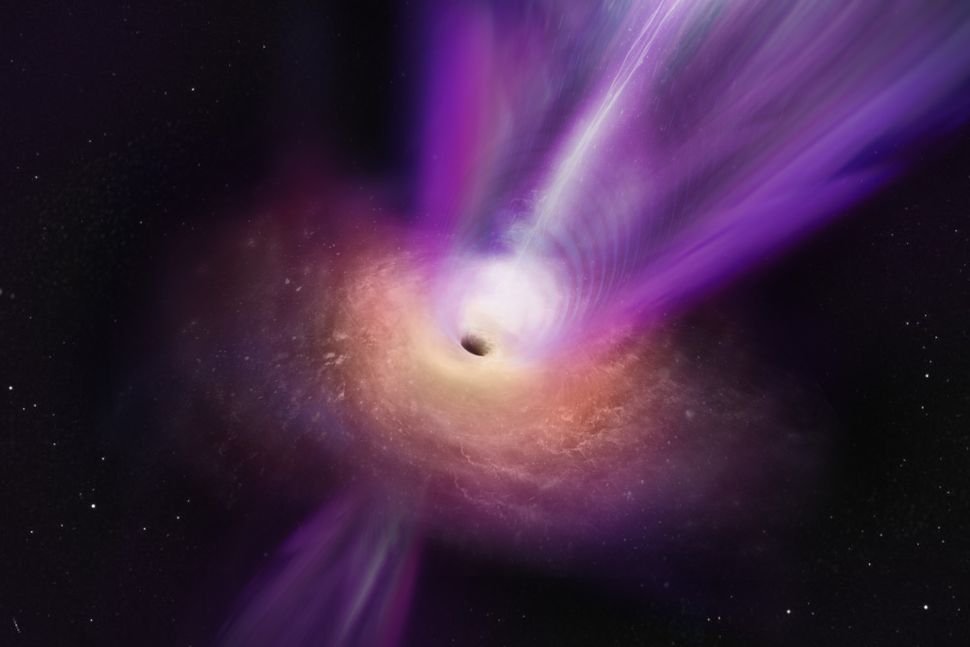Scientists are speculating that primordial black holes, ancient remnants from the early universe, might be moving through our solar system without being detected.
These black holes are significantly smaller than the ones formed from collapsing stars and could hold clues to understanding dark matter, which makes up the bulk of the universe’s mass.
Primordial black holes are thought to have formed shortly after the Big Bang, from tiny fluctuations in the early universe’s density.
Unlike stellar-mass black holes, which develop from the gravitational collapse of massive stars and generally have masses five to ten times that of the Sun, primordial black holes are much lighter and smaller.
Their mass might be as small as an asteroid, and they could be no bigger than a grain of sand.

According to Sarah Geller, a theoretical physicist at the University of California at Santa Cruz, these black holes in their work are at least 10 billion times lighter than the Sun and barely larger than a hydrogen atom.
This distinct formation process makes them promising candidates for explaining dark matter, which accounts for approximately 85% of all matter in the universe.
Recent studies propose that if primordial black holes are abundant, they could pass through our solar system regularly, maybe as often as once a decade.
As they traverse space, their gravitational pull might disturb the orbits of planets, moons, and other celestial bodies.
Although these distortions would be minor, they could potentially be measurable with advanced enough instruments.
Benjamin Lehmann, a theoretical physicist at MIT, explained that a primordial black hole’s gravitational influence could produce detectable wobbles in the orbits of solar system objects.
However, identifying these disturbances is not a simple task. The gravitational effects are subtle and current technology might not be precise enough to observe them.
More sophisticated computer simulations and observational data are needed to make conclusive claims.
The research team is exploring collaborations with experts at the Paris Observatory to refine their models and search for possible signatures of primordial black holes. Detecting these black holes would be revolutionary for dark matter research.
For decades, scientists have tried to detect particles that constitute dark matter, but none have been identified.
Primordial black holes offer an alternative, particle-free explanation. If proven, they could significantly contribute to our understanding of dark matter’s influence on stars, galaxies, and other cosmic structures.
Primordial black holes’ small size and mass make them incredibly challenging to detect directly.
Some researchers have even considered hypothetical scenarios like a black hole passing through Earth’s crust or atmosphere, but the chances are astronomically low due to the vastness of space.
Instead, researchers believe that larger systems, like the precisely measured orbits of objects in the solar system, might be the key.
If primordial black holes exist, they might be numerous enough for at least one to traverse the inner solar system every decade.
Technologies capable of detecting such perturbations may have already registered several flybys.
However, the scientists caution that they are not asserting the definitive existence of primordial black holes in our solar system.
Instead, they hypothesize that if these black holes are part of dark matter, then they might travel through the solar system periodically.
Their findings are based on relatively simple computer simulations and require more precise modeling and data analysis to make definitive statements.
The possible detection of primordial black holes through their gravitational effects is not entirely sufficient to distinguish them from other unusual objects with similar mass.
Follow-up observations would be necessary to rule out other possibilities. Astronomers are adept at finding smaller objects in the solar system, such as asteroids, although direct observation of tiny black holes would likely show nothing.
The research team detailed their findings in the journal Physical Review D and continues to discuss potential collaborations to analyze existing orbital data.
If successful, this approach could finally provide the evidence needed to confirm the existence of primordial black holes and solve one of the greatest mysteries in modern astrophysics.
